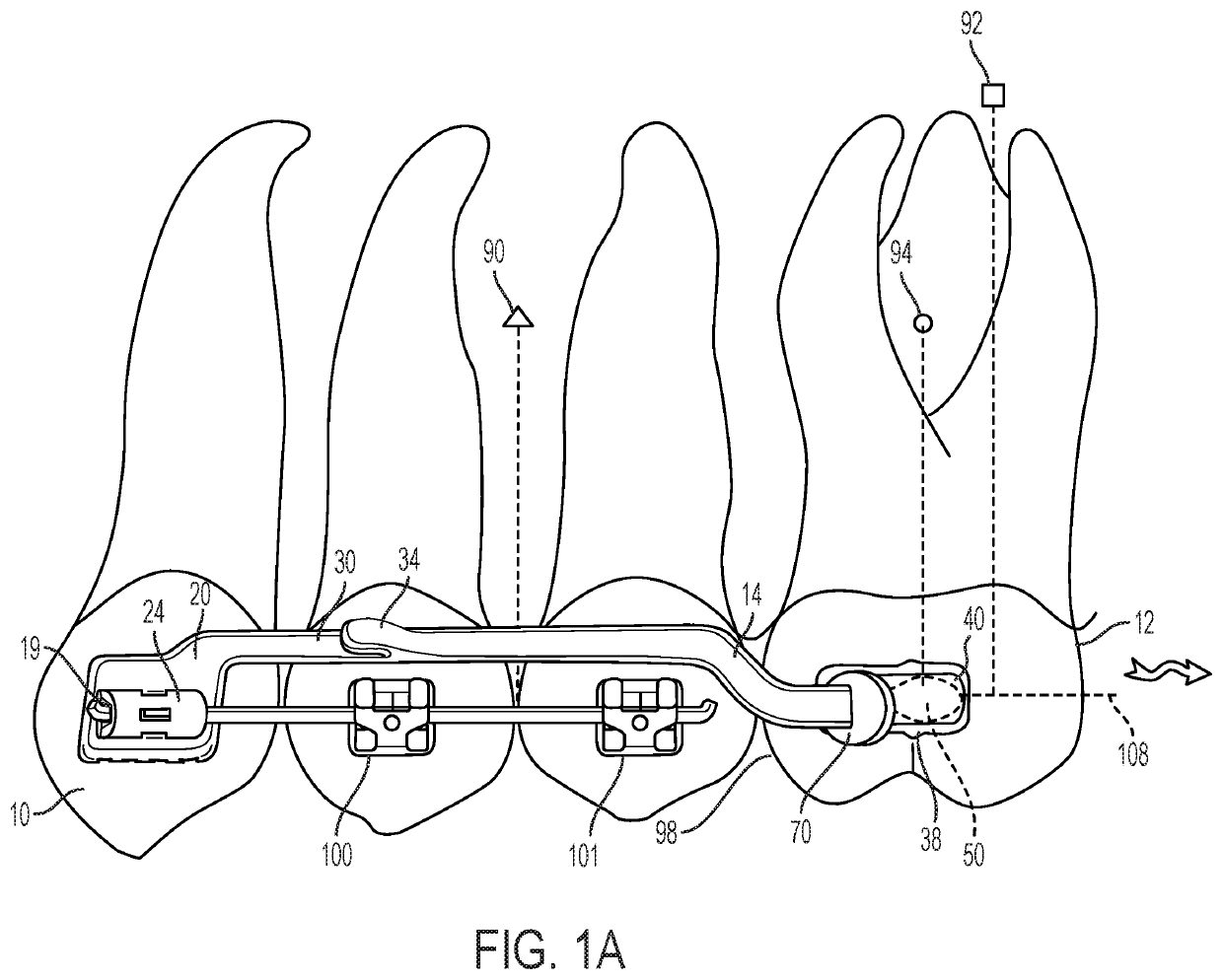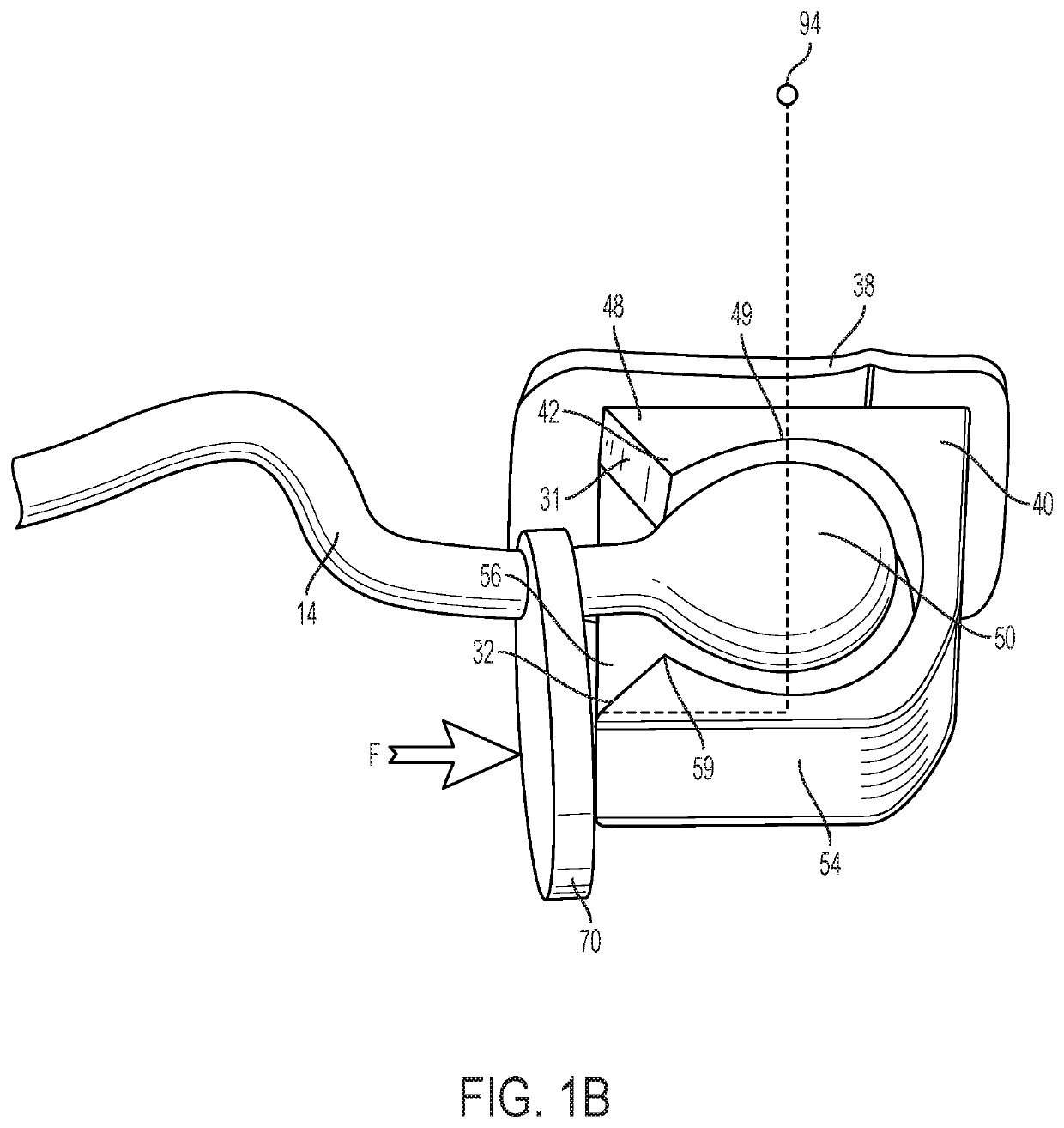Orthopedic-Orthodontic Molar Distalizer
a technology of orthodontic and molar distalizer, which is applied in the direction of brackets, arch wires, etc., can solve the problems of difficult assembly, complex and difficult manufacturing of the distalizer mechanism, and the need for external headgear wear
- Summary
- Abstract
- Description
- Claims
- Application Information
AI Technical Summary
Benefits of technology
Problems solved by technology
Method used
Image
Examples
Embodiment Construction
[0068]An orthodontic appliance for orthodontic treatment of a posterior maxillary sector extending from a mesial anchor tooth to a molar tooth unilaterally (i.e. on the same side of the maxilla) is provided. A mesial anchor tooth is commonly a canine, as shown in the attached figures, but may be a premolar if the canine is un-erupted or if it is less visible. The appliance is also referred to as a sliding distalizer, a molar distalizer, a sliding molar distalizer, or simply a distalizer throughout this document. With reference to the figures, the orthodontic appliance comprises a molar component 40, a canine attachment and a rod 30. Molar component 40 may be in the form of a tube, a clasp, or any other suitable shape, and is affixed to a molar tooth 12 via a bonding pad 38. The canine attachment includes a bonding pad 20 affixed to the enamel of a canine tooth 10.
[0069]The rod 30 has a step-up, saddle-shape in the occlusal-gingival plane and may be mildly curved buccolingually. In o...
PUM
 Login to View More
Login to View More Abstract
Description
Claims
Application Information
 Login to View More
Login to View More - R&D
- Intellectual Property
- Life Sciences
- Materials
- Tech Scout
- Unparalleled Data Quality
- Higher Quality Content
- 60% Fewer Hallucinations
Browse by: Latest US Patents, China's latest patents, Technical Efficacy Thesaurus, Application Domain, Technology Topic, Popular Technical Reports.
© 2025 PatSnap. All rights reserved.Legal|Privacy policy|Modern Slavery Act Transparency Statement|Sitemap|About US| Contact US: help@patsnap.com



